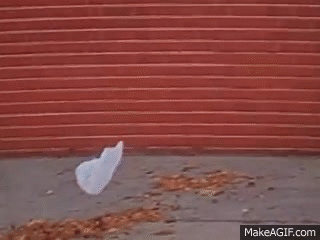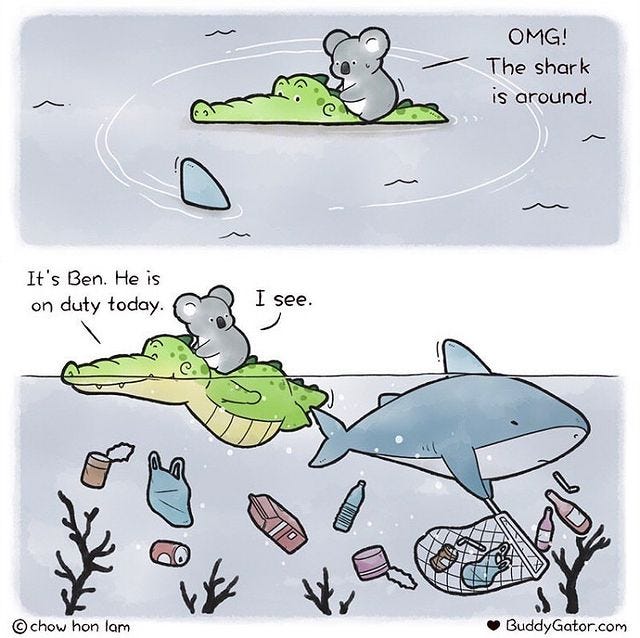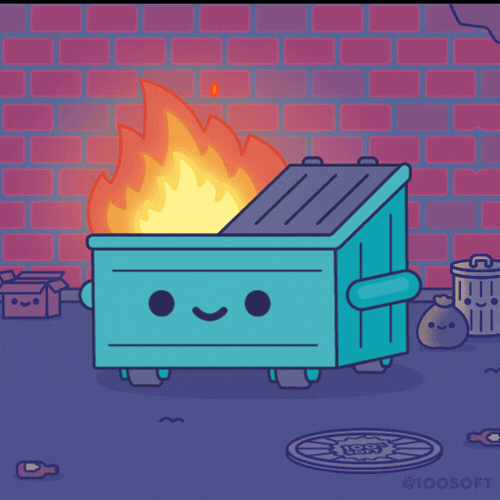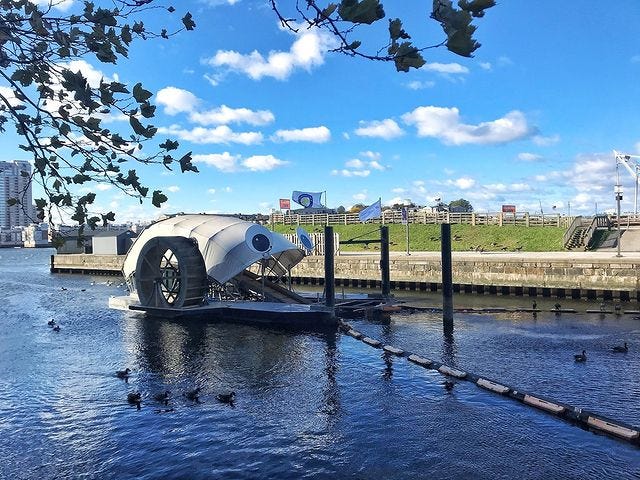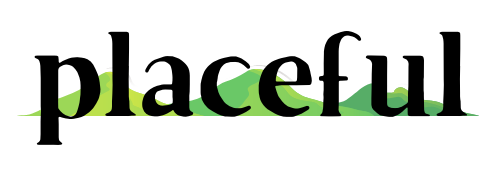Placeful is a weekly newsletter exploring sense of place, sustainability, and the actions we can take to more deeply engage with our communities and wild spaces. Each week covers a new topic. To learn more about the “why” behind Placeful, start here.
Any books mentioned in this issue can be found on my bookshop shelf. I may earn a commission from books purchased through these links, at no additional cost to you.
✨ Welcome to 2021 dear reader ✨
For many, the beginning of a new calendar year is an opportunity for reflection and goal-setting, a time to think about what is important to us. For folks planning to incorporate placefulness into their New Year’s resolutions, subscibing to this newsletter is a great start! If you’ve set a goal to read more books this year, or start a gratitude journal, those are wonderful goals that can easily align with placefulness.
Today though, I want to talk about one resolution that is extremely simplistic, but can help us strengthen our bonds to place—picking up litter.
When’s the last time you strolled along on a walk in the countryside, or a park that you frequent, and come across a piece of litter? You know, like the empty snack-sized bag of Doritos chilling in a shrub near your apartment? For many of us, this could be as recently as this morning.
We all know that litter is a problem—and a costly and harmful one at that.
Today I’ve written about how and why we should take something ugly—like trash lying about in our neighborhoods, parks, natural areas, and favorite swimming spots—and turn it into something beautiful. But not in the creepy American Beauty way. Let’s get started!
Defining the issue
It seems pretty obvious, but for clarity, here are The Five W’s of Picking Up Litter before we go too deep.
Who: You!
What: Picking up litter (grocery bags, empty cans, lollipop wrappers, etc.) and tossing it in the proper receptacle
When: On walks, visits to the park, bike rides, and other activities that get you out and about
Where: Public spaces and natural areas in your community (and beyond)
Why: Because picking up litter is an act of love and helps make the world better for all living beings
How: Whatever works for you! If you want to bring gloves, hand sani, and a trash bag, I encourage it—I typically just hold onto the trash until the next available recycling or garbage bin and wash my hands when I get to my destination
Love the earth, not the trash
An “act of love” seems a bit hyperbolic, even as I write it. Leaning over to grab someone’s unscrupulously-discarded styrofoam smoothie cup is an action that takes 5 seconds and usually warrants a response along the lines of “ew” or “why is this here???” Allow me to explain in three parts.
Litter removal is a tangible action.
In this newsletter, I try to balance theoretical approaches to placefulness with more tangible actions; picking up litter is at the far end of the “tangible actions” scale. We see it through from beginning to end, and get that little boost that comes from performing a small act of kindness.
Picking up litter is also tactile, which creates the possibility of affectionate touch between us and the environment around us, kind of like brushing knots out of a loved one’s hair, or pulling something sharp out of your pet’s little paws.
With our hands, we remove the things that are bad, and in the process, feel more connected to the recipient or our kind actions. Which leads into the next bit . . .
Caring for our communities strengthens our bonds to them.
In an interview for the Ezra Klein Show from 2019, Alison Gopnik, child development and philosophy professor and author of The Gardener and the Carpenter, discusses our flawed views on what nurtures human bonds, and how we can feel more connected to others by shifting our perspective.
Gopnik suggests that for many folks, a way we try to show love is by attempting to be less burdensome to those we love. However, this is antithetic to research in human evolutionary psychology.
We don’t love our infants less because they require more care and attention; the act of caring for them strengthens our love for them. We don’t love the neighbors in our cul-de-sac that we never hear from. We love the people for whom we can provide mutual aid, borrowing a cup of sugar or trading an hour of child care here and there.
Caring establishes bonds between children and parents, between neighbors, and, I hypothesize, between us and our communities and wild spaces. Alison Gopnik stresses that, psychologically speaking, we don’t care for people because we love them, we love them because we care for them.
We feel connected to the people that we have the privilege to care for, a result of our mammalian evolutionary history and the extension of the bond between mothers and babies to the love of others, including our partners, neighbors, and extended family. I very much believe we can extrapolate this to places, too.
In evolutionary history, the extension of altruism from mothers and babies to larger groups allowed humans to cooperate and thrive. Now our lives are entangled with those of everyone else on the planet, and our survival depends on widening the circle even more. - Alison Gopnik, Apr. 2020
Ultimately, we should worry less about being a burden, and instead find creative ways to show that we care. By picking up litter in our communities, we are acting altruistically and showing that we care, which we now know helps us to grow more connected—a positive feedback loop stemming from a single small action.
Picking up litter is an opportunity for community engagement.
As always, with any goal that we set, there are probably others out there who would love to join us. By leading by example in our communities and picking up trash when we see it, others may follow suit—and maybe even not litter in the first place!
Additionally, with something this straightforward, it’s fairly easy to organize a socially-distant community clean-up date, or a recurring weekend morning each month where you and your neighbors could go out and pick-up litter together along a frequented road or the edges of a local playground.
While we engage with others, we can beautify our community and get to know it (and love it) at the same time.
While we’re on the topic . . .
Before we wrap this up, it is important to note that, in communities where loose trash is more noticeable, we should never assume it is a reflection of that people that live there. There is a long, complex, racist history of associating low income people or people of color with dirty and unclean places. This article and this thesis are two resources if you are interested in the intersection of sanitation work, racism, and inequity.
Take care of the commons, and it will take care of you
Stopping to pick up that half empty can of Monster Energy, or untangling a grocery bag from a tree, is an act of love, a tactile way we can deepen our connection to place and spread kindness—and also a necessary one until we reach a zero-waste society.
If your 2020 was a bit of a dumpster fire, I hope this one small action will help jumpstart the new year with a bit of good karma.
With love,
Emily
Placeful Practice
On your next excursion, make it a goal to pick up and throw away at least one piece of litter that you see. Make a habit of it and it will eventually feel less weird to be carrying around old pizza boxes and other such things you come across :)
If you want to take it even further, check out the app/website Litterati. They are creating a movement around cleaning up litter—“The Global Team Cleaning the Earth.”
Also, I have to mention one of my favorite trashy characters, Mr. Trash Wheel, who is cleaning up the Inner Harbor in Baltimore. So cute.
Placeful is a weekly email newsletter containing personal narratives and reporting on sense of place and sustainability. Each week I delve into a new topic, wrapping it up with an action item that will help readers foster deeper connections to the natural, cultural, built, and historic environments around them. Read more about Placeful.
To find a web version of this issue, click here. Know someone who would appreciate the topics I’m writing about? Please share! If you’d like, you can follow me on Twitter (@emily_ann_again) or Instagram (@emily.a.roberson). My inbox is always open at placeful.emily@gmail.com. And lastly, if someone forwarded this to you, subscribe below to receive future issues straight to your inbox. Thanks for reading <3





